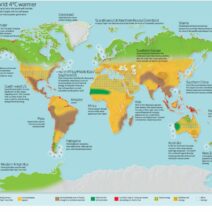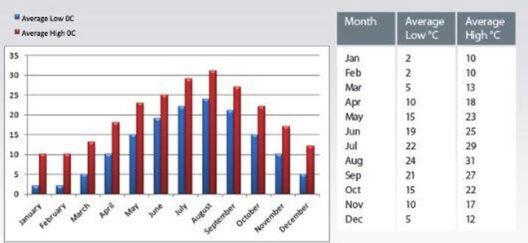In an era characterized by unprecedented levels of awareness regarding climate change, one of the most pressing issues is the role of transportation—particularly, motor vehicles—in exacerbating global warming. Transportation is not merely a means of getting from point A to point B; it is intricately intertwined with economic dynamics, urban planning, and individual lifestyles. By delving deeper into how vehicles contribute to greenhouse gas emissions, we can gain valuable insight into the complexities of climate change and the transformative shifts required to mitigate its effects.
At the crux of this issue lies carbon dioxide (CO2), one of the primary greenhouse gases emitted by vehicles. The combustion of fossil fuels—whether from gasoline or diesel—releases a copious amount of CO2 into the atmosphere. According to studies, the transportation sector accounts for nearly 29% of total greenhouse gas emissions in certain regions, underscoring its significance in the broader context of climate change. Each mile traveled in an internal combustion engine vehicle emits a quantifiable amount of carbon; thus, every journey contributes to this dire statistic.
Why does this matter? For each gram of CO2 released, there is a corresponding contribution to the greenhouse effect—a phenomenon that traps heat within the Earth’s atmosphere. As this heat accumulates, it leads to a series of climatic disruptions, including altered weather patterns, increased frequency of extreme weather events, and rising sea levels. The implications extend beyond environmental degradation; they threaten biodiversity, food security, and overall human health.
Furthermore, it is essential to consider the ancillary emissions tied to vehicle production and maintenance. The manufacturing process of vehicles is resource-intensive, consuming raw materials and energy, and producing emissions at all stages—from extracting minerals for car parts to transporting the vehicles to dealerships. Additionally, the upkeep of these vehicles, including regular maintenance and the production of replacement parts, contributes further to their carbon footprint.
To confront this challenge, one cannot overlook the implications of urban sprawl, which often necessitates the use of personal vehicles. Many urban planners have adopted car-centric designs that inadvertently hinder public transportation systems and promote dependency on automobiles. This leads to increased emissions as commuters spend more time on the road. Compact, walkable urban environments could alleviate some of these pressures by promoting public transit, cycling, and pedestrian-friendly spaces.
Public transportation offers a dual benefit. Firstly, it reduces the number of vehicles on the road, thereby lessening total emissions. Secondly, if powered by renewable energy sources, public transit systems can significantly diminish their carbon output. However, investment in these systems is crucial. Governments must prioritize funding and innovation to create efficient, reliable, and attractive alternatives to private car use.
Moreover, the rise of electric vehicles (EVs) represents a beacon of hope in the fight against carbon emissions. Unlike traditional vehicles, EVs generate little to no tailpipe emissions. However, the environmental impact of electric vehicles is multifaceted. While they may produce lower emissions during operation, the source of the electricity used for charging is paramount. If the power comes from fossil fuel-powered plants, the net benefits of EVs can be negated. Transitioning to a green energy grid is, therefore, essential for realizing the full potential of electric vehicles.
In addition to technological advancements, there lies a psychological and cultural aspect in the shift towards sustainable transportation solutions. The normalization of car usage as synonymous with freedom and success is ingrained in societal norms. Changing this perception requires authentic advocacy and education. Public awareness campaigns can illuminate the benefits of sustainable transportation methods, including the financial savings of less car reliance, reduced pollution, and enhanced community interactions fostered through public transport or cycling.
Moreover, innovations in logistics, such as car-sharing and ride-hailing services, provide compelling examples of how technology can facilitate reduced emissions. The ability to share rides effectively decreases the overall number of vehicles on roads at any given time, thus lowering carbon emissions per capita. These alternatives challenge long-standing perceptions of vehicle ownership and create frameworks for more sustainable mobility solutions.
Legislation and regulatory measures can also catalyze profound changes. Governments worldwide are enacting stricter emissions standards for vehicles, incentivizing fuel efficiency, and promoting cleaner alternatives. Implementing carbon taxes can further encourage consumers and corporations to reconsider their transportation choices. By placing a monetary value on carbon emissions, these measures compel individuals to seek lower-emission alternatives.
Ultimately, addressing the transportation sector’s contribution to global warming requires a multifaceted strategy that considers technological advancements, policy changes, urban planning, and cultural shifts. Each entity—from municipal governments to individual commuters—plays a crucial role in the collective effort to mitigate emissions. With concerted action and unwavering commitment, it is possible to reforge our relationship with transportation and forge a path toward a more sustainable future.
As we look to the horizon, the convergence of innovative technologies and emerging cultural perspectives promises a transformative journey toward reducing carbon emissions generated by vehicles and curbing the effects of climate change. By embracing new paradigms in transportation, we stand poised to rewrite the narrative of our planet’s future, one sustainable step at a time.








